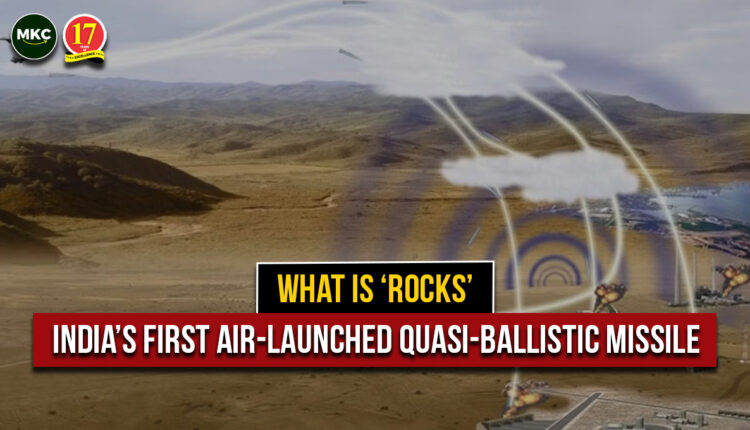What is ‘ROCKS’, India’s first air-launched quasi-ballistic missile
The Indian Air Force (IAF) recently conducted a test of the ROCKS, a next-generation extended stand-off air-to-surface missile. Designed and manufactured by the Israeli defense company Rafael, the ROCKS has been tailored to meet India’s specific requirements.

Last week, the Indian Air Force (IAF) conducted a low-profile test of a quasi-ballistic missile called ROCKS from the Su-30 MKI aircraft. This test signifies a notable enhancement in India’s capability to strike deep within enemy territory without breaching its own airspace. According to sources in the defense and security sector, the test firing was confirmed to be successful.
The missile, known as ROCKS, is a next-generation extended stand-off air-to-surface missile. It has been developed by the Israeli defense company Rafael Advanced Defense Systems, with India’s requirements taken into consideration during the design and manufacturing process.
ALSO READ: 11 Things To Certainly Do Before Next SSB Interview
It’s been reported that the missile is derived from the Sparrow series of air-launched ballistic missile targets, utilizing capabilities from the Spice series of missiles. Several components of the missile are sourced from India. Under the Atmanirbhar initiative, the Indian Air Force (IAF) is considering placing a larger order and aims for manufacturing the missiles domestically.
Sources mention that the missile, first showcased at the 2019 Aero India in Bengaluru, is a quasi-ballistic missile with a range of less than 300 km.
In quasi-ballistic mode, the missile operates differently from conventional air-to-ground weapon systems. The pilot can select either a horizontal or vertical trajectory for the missile. Its purpose is to target high-value stationary or relocatable objectives, whether above or below ground, as well as heavily fortified locations, with precise accuracy even in areas where GPS signals are unavailable.
Operating autonomously and launched from a considerable distance away from heavily defended areas, ROCKS incorporates technologies from previous air-to-surface weapons like the Popeye and SPICE.
Rafael explains that before its release, the pilot assigns a mission to the missile, specifying target type, coordinates, impact angle, azimuth, topographic imagery data, and fuse delays. The missile is guided to the target using a GPS navigation system, homing device, and scene-matching technology for precise targeting in the final moments.
An advanced electro-optical (EO) seeker, combined with anti-radiation homing, enables operation in all conditions, day or night, and in any weather.
Rafael claims that automatic target acquisition, using a unique scene-matching algorithm and anti-radiation technology, can overcome GPS jamming, navigation errors, and target location inaccuracies.
Additionally, the missile is capable of striking moving targets.
With this addition, the Su-30 MKIs will now have two significant missiles available: the ROCKS, as mentioned, and the air-to-surface version of the BrahMos supersonic cruise missile.
The Indian Air Force (IAF) already employs various Israeli missiles, such as the Spice 2000 utilized in the Balakot air strike. Another missile, Crystal Maze, was intended for firing but faced technical difficulties.








